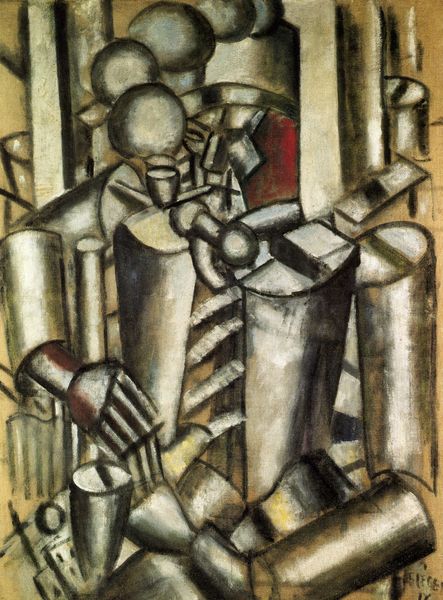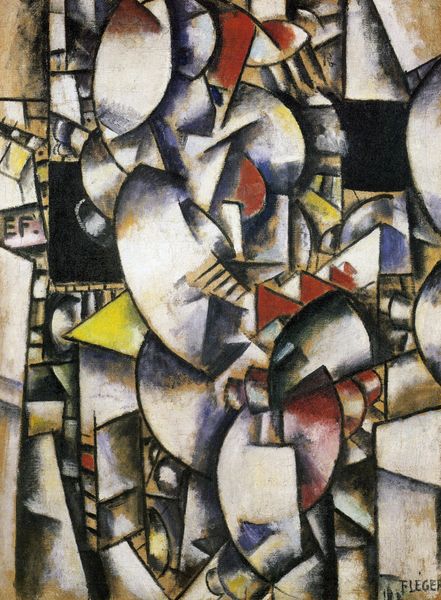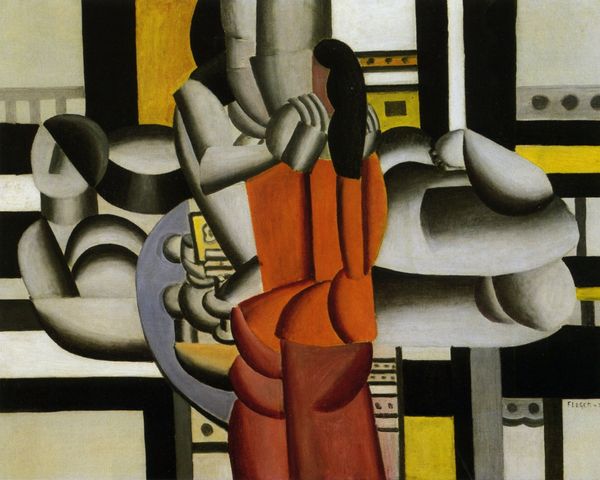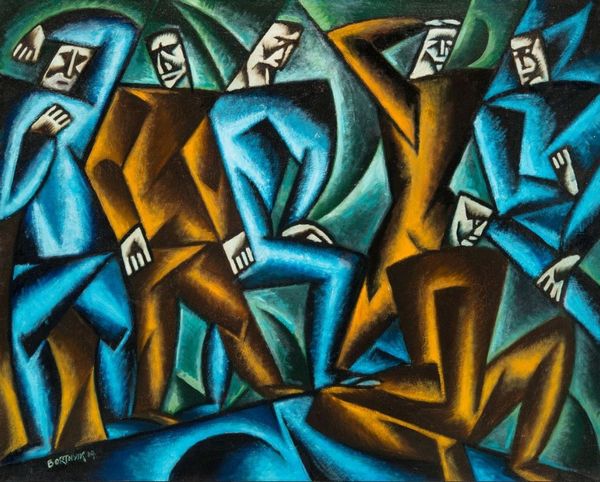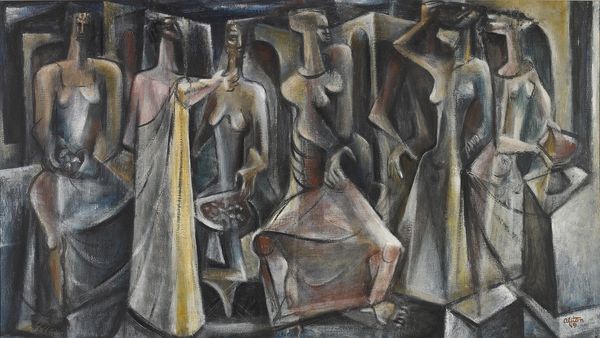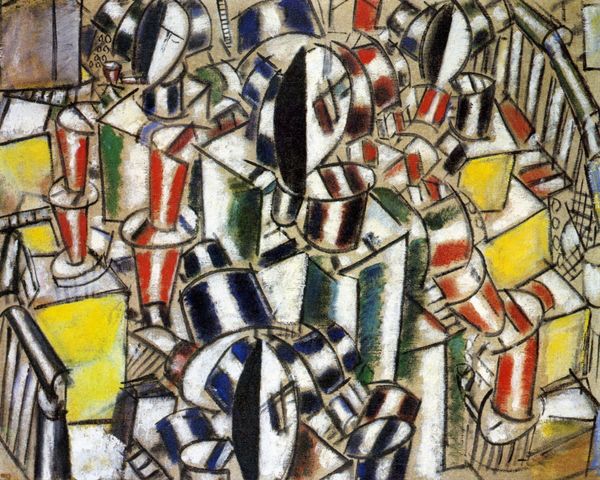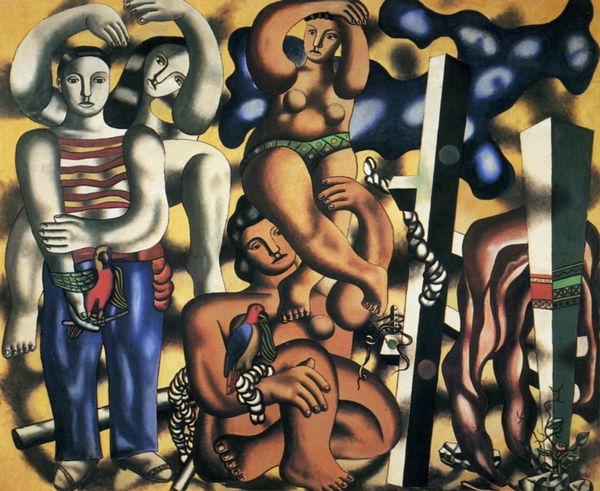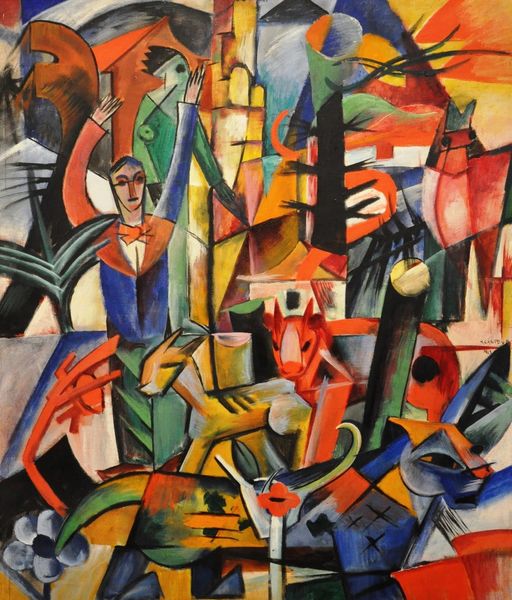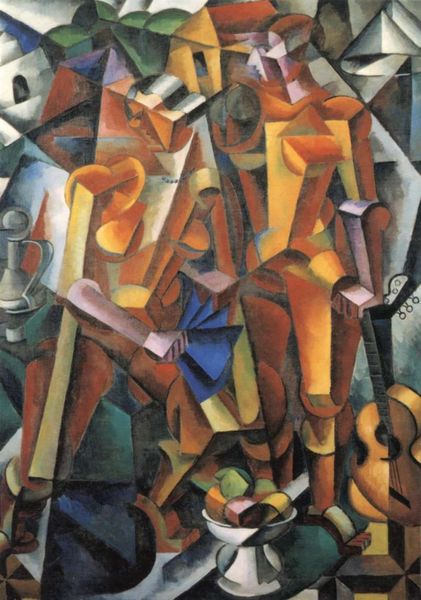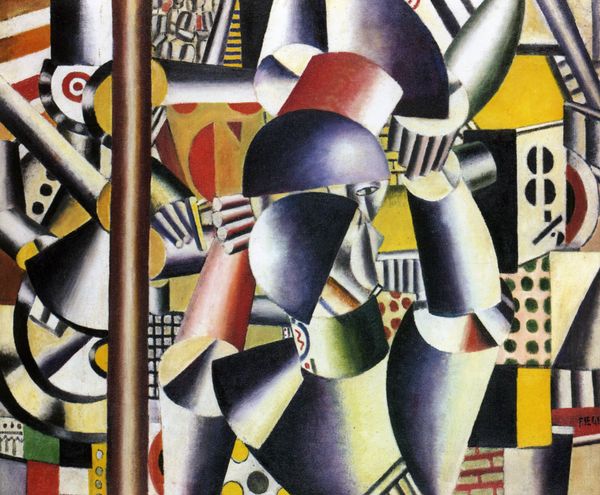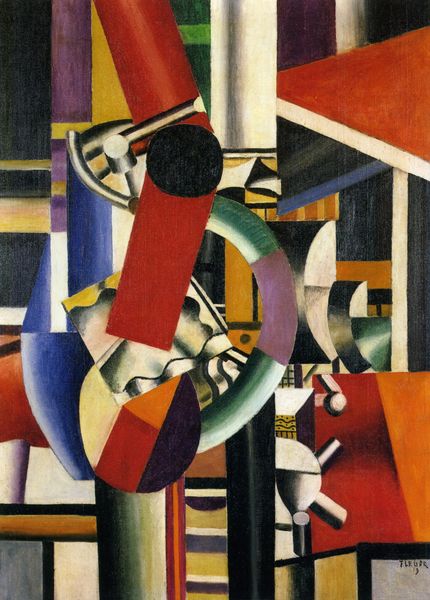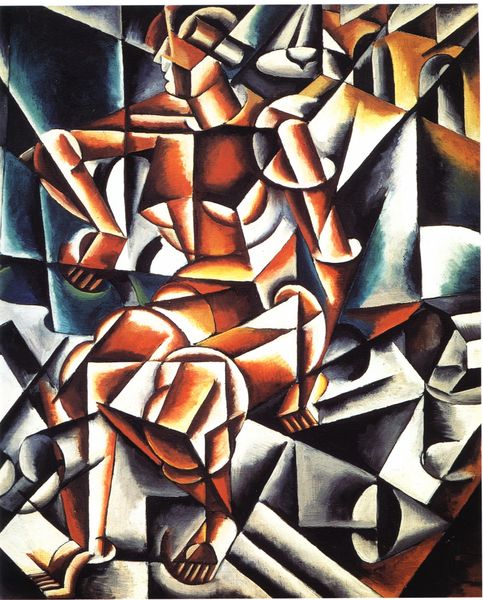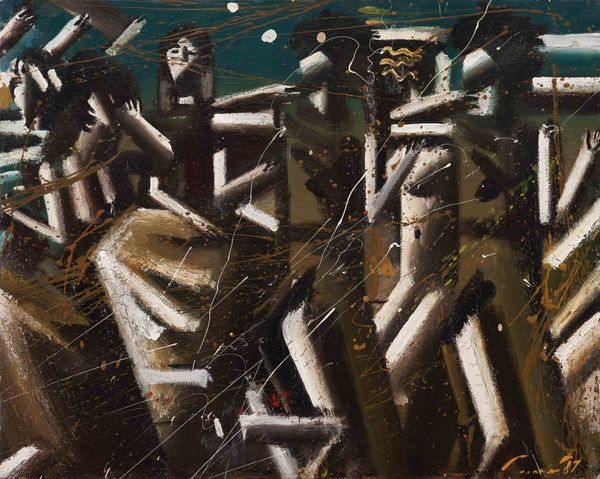
painting, oil-paint
#
cubism
#
abstract painting
#
painting
#
oil-paint
#
figuration
#
acrylic on canvas
#
geometric
#
cityscape
#
modernism
Copyright: Public domain US
Curator: Welcome. Here we have Fernand Léger's 1917 painting, "The Part of Chart," executed in oil on canvas. Editor: Immediately, I’m struck by the cold, almost robotic feel. It’s unsettling, with these strange cylindrical shapes dominating the composition. Curator: Precisely! Léger sought to capture the dynamism of modern life through geometric forms. Notice how the composition employs a limited palette—mostly ochre, grey, and a steely blue—to convey a sense of the industrial. It speaks to the aesthetic he called "Tubism". Editor: It certainly seems fitting given the period – painted during World War I. I see those almost metallic shapes as allusions to machinery, weaponry, and the dehumanizing aspects of war. Are those soldiers at a table gambling or is that speculation? Curator: That's a keen reading. You see hints of figures, recognizable objects such as playing cards and pipes amid the mechanized abstraction. He integrated elements of figuration, resisting pure abstraction even while exploring cubist principles of fragmentation. I see them gambling to numb themselves to the realities around them, escaping if only for a while. Editor: I wonder how those escaping around the game table contend with a backdrop that seems to suggest they're caught in a war machine of sorts. Curator: The picture plane is constructed in such a way that multiple perspectives are forced together—the cards themselves flattened, then cylinders suggesting arms. The effect is a fractured yet strangely unified image, like the fragmented experience of modernity itself. Léger attempts here to impose a visual and formal order over such chaos. Editor: Ultimately it presents an intriguing tension. By juxtaposing leisure with those imposing geometric shapes, Léger encourages a critical look at the social structures underpinning even the most ordinary activities during times of extreme political and societal turmoil. Curator: A cogent observation, yes. It brings forth the anxieties simmering beneath the surface. It compels us to investigate these shapes closely, in order to ask important questions about this modern life, indeed. Editor: An opportunity well worth it! Thank you for your time.
Comments
No comments
Be the first to comment and join the conversation on the ultimate creative platform.
